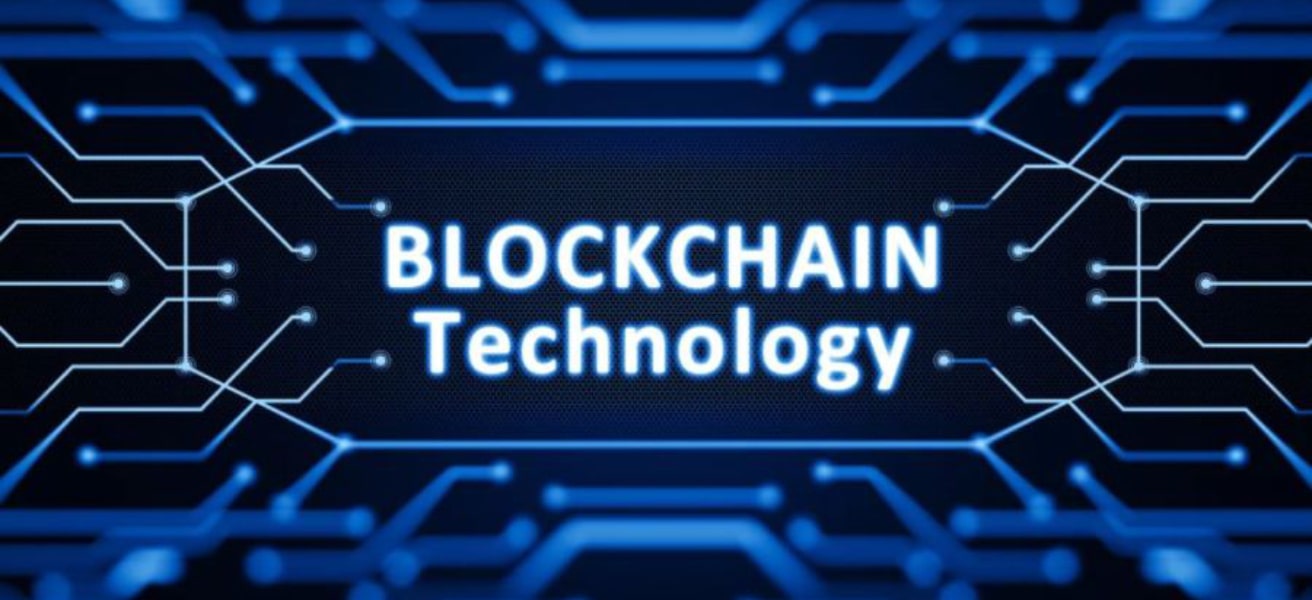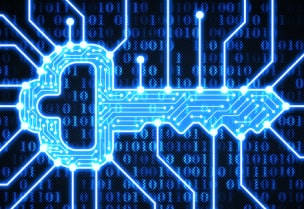
If you have been following banking, investing, or cryptocurrency over the last ten years, you may be familiar with “blockchain,” the record-keeping technology behind bitcoin. And there’s a good chance that it only makes so much sense. In trying to learn more about blockchain, you've probably encountered a definition like this: “blockchain is a distributed, decentralized, public ledger."
The good news is, blockchain is actually easier to understand than that definition sounds
What is Blockchain?
If this technology is so complex, why call it “blockchain?” At its most basic level, blockchain is literally just a chain of blocks, but not in the traditional sense of those words. When we say the words “block” and “chain” in this context, we are actually talking about digital information (the “block”) stored in a public database (the “chain”).
“Blocks” on the blockchain are made up of digital pieces of information. Specifically, they have three parts:
- Blocks store information about transactions like the date, time, and dollar amount of your most recent purchase from Amazon. (NOTE: This Amazon example is for illustrative purchases; Amazon retail does not work on a blockchain principle).
- Blocks store information about who is participating in transactions. A block for your splurge purchase from Amazon would record your name along with Amazon.com, Inc. Instead of using your actual name, your purchase is recorded without any identifying information using a unique “digital signature,” sort of like a username.
- Blocks store information that distinguishes them from other blocks. Much like you and I have names to distinguish us from one another, each block stores a unique code called a “hash” that allows us to tell it apart from every other block. Let’s say you made your splurge purchase on Amazon, but while it’s in transit, you decide you just can’t resist and need a second one. Even though the details of your new transaction would look nearly identical to your earlier purchase, we can still tell the blocks apart because of their unique codes.
While the block in the example above is being used to store a single purchase from Amazon, the reality is a little different. A single block on the blockchain can actually store up to 1 MB of data. Depending on the size of the transactions, that means a single block can house a few thousand transactions under one roof.
How Blockchain Works?
When a block stores new data it is added to the blockchain. Blockchain, as its name suggests, consists of multiple blocks strung together. In order for a block to be added to the blockchain, however, four things must happen:
- A transaction must occur. Let’s continue with the example of your impulsive Amazon purchase. After hastily clicking through multiple checkout prompt, you go against your better judgment and make a purchase.
- That transaction must be verified. After making that purchase, your transaction must be verified. With other public records of information, like the Securities Exchange Commission, Wikipedia, or your local library, there’s someone in charge of vetting new data entries. With blockchain, however, that job is left up to a network of computers. When you make your purchase from Amazon, that network of computers rushes to check that your transaction happened in the way you said it did. That is, they confirm the details of the purchase, including the transaction’s time, dollar amount, and participants. (More on how this happens in a second.)
- That transaction must be stored in a block. After your transaction has been verified as accurate, it gets the green light. The transaction’s dollar amount, your digital signature, and Amazon’s digital signature are all stored in a block. There, the transaction will likely join hundreds, or thousands, of others like it.
- That block must be given a hash. Not unlike an angel earning its wings, once all of a block’s transactions have been verified, it must be given a unique, identifying code called a hash. The block is also given the hash of the most recent block added to the blockchain. Once hashed, the block can be added to the blockchain.
When that new block is added to the blockchain, it becomes publicly available for anyone to view—even you. If you take a look at Bitcoin’s blockchain, you will see that you have access to transaction data, along with information about when (“Time”), where (“Height”), and by who (“Relayed By”) the block was added to the blockchain.
Is Blockchain Private?
Anyone can view the contents of the blockchain, but users can also opt to connect their computers to the blockchain network. In doing so, their computer receives a copy of the blockchain that is updated automatically whenever a new block is added, sort of like a Facebook News Feed that gives a live update whenever a new status is posted.
Each computer in the blockchain network has its own copy of the blockchain, which means that there are thousands, or in the case of Bitcoin, millions of copies of the same blockchain. Although each copy of the blockchain is identical, spreading that information across a network of computers makes the information more difficult to manipulate. With blockchain, there isn’t a single, definitive account of events that can be manipulated. Instead, a hacker would need to manipulate every copy of the blockchain on the network.
Looking over the Bitcoin blockchain, however, you will notice that you do not have access to identifying information about the users making transactions. Although transactions on the blockchain are not completely anonymous, personal information about users is limited to their digital signature or username.
This raises an important question: if you cannot know who is adding blocks to the blockchain, how can you trust blockchain or the network of computers upholding it?
With millions of computers on the blockchain network at any given time it is unlikely that anyone could make a change without being noticed.
Is Blockchain Secure?
Blockchain technology accounts for the issues of security and trust in several ways. First, new blocks are always stored linearly and chronologically. That is, they are always added to the “end” of the blockchain. If you take a look at Bitcoin’s blockchain, you’ll see that each block has a position on the chain, called a “height.” As of Feb. 2019, the block’s height had topped 562,000.
After a block has been added to the end of the blockchain, it is very difficult to go back and alter the contents of the block. That’s because each block contains its own hash, along with the hash of the block before it. Hash codes are created by a math function that turns digital information into a string of numbers and letters. If that information is edited in any way, the hash code changes as well.
Here’s why that’s important to security. Let’s say a hacker attempts to edit your transaction from Amazon so that you actually have to pay for your purchase twice. As soon as they edit the dollar amount of your transaction, the block’s hash will change. The next block in the chain will still contain the old hash, and the hacker would need to update that block in order to cover their tracks. However, doing so would change that block’s hash. And the next, and so on.
In order to change a single block, then, a hacker would need to change every single block after it on the blockchain. Recalculating all those hashes would take an enormous and improbable amount of computing power. In other words, once a block is added to the blockchain it becomes very difficult to edit and impossible to delete.
To address the issue of trust, blockchain networks have implemented tests for computers that want to join and add blocks to the chain. The tests, called “consensus models,” require users to “prove” themselves before they can participate in a blockchain network. One of the most common examples employed by Bitcoin is called “proof of work.”
Proof of work does not make attacks by hackers impossible, but it does make them somewhat useless. If a hacker wanted to coordinate an attack on the blockchain, they would need to solve complex computational math problems at 1 in 5.8 trillion odds just like everyone else. The cost of organizing such an attack would almost certainly outweigh the benefits.
Blockchain vs. Bitcoin
The goal of blockchain is to allow digital information to be recorded and distributed, but not edited. That concept can be difficult to wrap our heads around without seeing the technology in action, so let’s take a look at how the earliest application of blockchain technology actually works.
Blockchain technology was first outlined in 1991 by Stuart Haber and W. Scott Stornetta, two researchers who wanted to implement a system where document timestamps could not be tampered with. But it wasn’t until almost two decades later, with the launch of Bitcoin in January 2009, that blockchain had its first real-world application.
The Bitcoin protocol is built on the blockchain. In a research paper introducing the digital currency, Bitcoin’s pseudonymous creator Satoshi Nakamoto referred to it as “a new electronic cash system that’s fully peer-to-peer, with no trusted third party.”
Here’s how it works
When one person pays another for goods using Bitcoin, computers on the Bitcoin network race to verify the transaction. In order to do so, users run a program on their computers and try to solve a complex mathematical problem, called a “hash.” When a computer solves the problem by “hashing” a block, its algorithmic work will have also verified the block’s transactions. The completed transaction is publicly recorded and stored as a block on the blockchain, at which point it becomes unalterable. In the case of Bitcoin, and most other blockchains, computers that successfully verify blocks are rewarded for their labor with cryptocurrency.
Although transactions are publicly recorded on the blockchain, user data is not—or, at least not in full. In order to conduct transactions on the Bitcoin network, participants must run a program called a “wallet.” Each wallet consists of two unique and distinct cryptographic keys: a public key and a private key. The public key is the location where transactions are deposited to and withdrawn from. This is also the key that appears on the blockchain ledger as the user’s digital signature.
Even if a user receives a payment in Bitcoins to their public key, they will not be able to withdraw them with the private counterpart. A user’s public key is a shortened version of their private key, created through a complicated mathematical algorithm. However, due to the complexity of this equation, it is almost impossible to reverse the process and generate a private key from a public key. For this reason, blockchain technology is considered confidential.
While confidentiality on the blockchain network protects users from hacks and preserves privacy, it also allows for illegal trading and activity on the blockchain network.
Blockchain's Practical Application
Blocks on the blockchain store data about monetary transactions—we’ve got that out of the way. But it turns out that blockchain is actually a pretty reliable way of storing data about other types of transactions, as well. In fact, blockchain technology can be used to store data about property exchanges, stops in a supply chain, and even votes for a candidate.
Bank Use
By integrating blockchain into banks, consumers can see their transactions processed in as little as 10 minutes, basically the time it takes to add a block to the blockchain, regardless of the time or day of the week. With blockchain, banks also have the opportunity to exchange funds between institutions more quickly and securely. In the stock trading business, for example, the settlement and clearing process can take up to three days (or longer, if banks are trading internationally), meaning that the money and shares are frozen for that time.
Use in Cryptocurrency
Blockchain forms the bedrock for cryptocurrencies like Bitcoin. As we explored earlier, currencies like the U.S. dollar are regulated and verified by a central authority, usually a bank or government. Under the central authority system, a user’s data and currency are technically at the whim of their bank or government. If a user’s bank collapses or they live in a country with an unstable government, the value of their currency may be at risk. These are the worries out of which Bitcoin was borne.
By spreading its operations across a network of computers, blockchain allows Bitcoin and other cryptocurrencies to operate without the need for a central authority. This not only reduces risk but also eliminates many of the processing and transaction fees. It also gives those in countries with unstable currencies a more stable currency with more applications and a wider network of individuals and institutions they can do business with, both domestically and internationally (at least, this is the goal.)
Healthcare Uses
Health care providers can leverage blockchain to securely store their patients’ medical records. When a medical record is generated and signed, it can be written into the blockchain, which provides patients with the proof and confidence that the record cannot be changed. These personal health records could be encoded and stored on the blockchain with a private key, so that they are only accessible by certain individuals, thereby ensuring privacy.
Property Records Use
If you have ever spent time in your local Recorder’s Office, you will know that the process of recording property rights is both burdensome and inefficient. Today, a physical deed must be delivered to a government employee at the local recording office, where is it manually entered into the county’s central database and public index. In the case of a property dispute, claims to the property must be reconciled with the public index.
This process is not just costly and time-consuming—it is also riddled with human error, where each inaccuracy makes tracking property ownership less efficient. Blockchain has the potential to eliminate the need for scanning documents and tracking down physical files in a local recording office. If property ownership is stored and verified on the blockchain, owners can trust that their deed is accurate and permanent.
Use in Smart Contracts
A smart contract is a computer code that can be built into the blockchain to facilitate, verify, or negotiate a contract agreement. Smart contracts operate under a set of conditions that users agree to. When those conditions are met, the terms of the agreement are automatically carried out.
Say, for example, I’m renting you my apartment using a smart contract. I agree to give you the door code to the apartment as soon as you pay me your security deposit. Both of us would send our portion of the deal to the smart contract, which would hold onto and automatically exchange my door code for your security deposit on the date of the rental. If I don’t supply the door code by the rental date, the smart contract refunds your security deposit. This eliminates the fees that typically accompany using a notary or third-party mediator.
Supply Chain Use
Suppliers can use blockchain to record the origins of materials that they have purchased. This would allow companies to verify the authenticity of their products, along with health and ethics labels like “Organic,” “Local,” and “Fair Trade”.
As reported by Forbes the food industry is moving into the use of blockchain to increasingly track the path and safety of food throughout the farm-to-user journey.
Uses in Voting
Voting with blockchain carries the potential to eliminate election fraud and boost voter turnout, as was tested in the Nov. 2018 midterm elections in West Virginia. Each vote would be stored as a block on the blockchain, making them nearly impossible to tamper with. The blockchain protocol would also maintain transparency in the electoral process, reducing the personnel needed to conduct an election and provide officials with instant results.
What's Next for Blockchain?
First proposed as a research project in 1991, blockchain is comfortably settling into its late twenties. Like most millennials its age, blockchain has seen its fair share of public scrutiny over the last two decades, with businesses around the world speculating about what the technology is capable of and where it’s headed in the years to come.
With many practical applications for the technology already being implemented and explored, blockchain is finally making a name for itself at age twenty-seven, in no small part because of bitcoin and cryptocurrency. As a buzzword on the tongue of every investor in the nation, blockchain stands to make business and government operations more accurate, efficient, and secure.
As we prepare to head into the third decade of blockchain, it’s no longer a question of "if" legacy companies will catch on to the technology—it's a question of "when".
Blog

Best Anonymous Bitcoin Wallets of 2020
There are many people that think that they can use Bitcoin anonymously since they do not have their personal identities on the blockchain, but this is not correct since Bitcoin can easily be tracked back to the owner due to its permissionless protocol.

Top 7 Best Bitcoin Mining Software
The mining itself has been greatly simplified with people developing simpler mining software that can be set up by almost anyone. And while the latest software with Windows-based GUI is probably a best option for a mining beginner, more complicated text-based mining programs are still available for experienced miners.

13 Ways To Make Money With Cryptocurrency
Do you want to earn money from cryptocurrencies? Well, who doesn’t! Hence, in this article, I am going to share with you some of the best ways of making money in the crypto-sphere.

The Best Ways To Safely Store Your Private Keys Or Seed Key
Let’s face it, managing cryptocurrencies isn’t easy. Owning cryptocurrencies means being your own bank and taking complete responsibility of your funds. Here, unlike the fiat world, there is no bank manager or cashier to will listen to your grievances or revert your transactions.